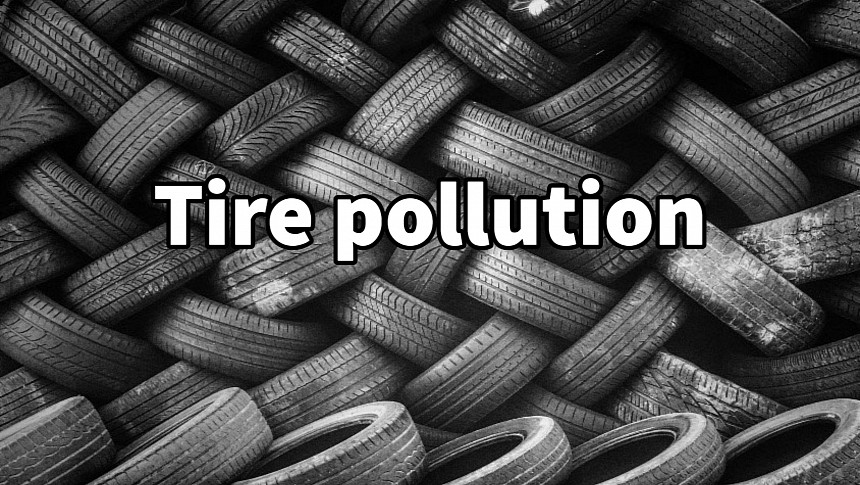Electric vehicles are significantly heavier than their ICE-powered counterparts, which causes the tires to wear a lot faster. US and European authorities seek to force producers to change the tire rubber composition to make them less polluting. This is set to raise prices across the board.
Some critics try to depict electric vehicles as more polluting over the entire lifetime than ICE vehicles, but it isn't true. Even if EV and battery production are more polluting, this is offset in the first years of ownership, thanks to the much higher efficiency. And as the energy sources become less reliant on fossil fuels, EVs will only become better for the environment. But there's a problem that is only now becoming obvious: EVs emit far more particles from tire wear than comparable gas-powered cars.
Many EV owners were surprised that they need to change tires much more often than expected, even when driving gently. This is normal because when tires interact with the road, abrasion causes tiny rubber particles to detach and get into the air. The heavier a vehicle is, the faster the tire wear and the more rubber particles are released. Accelerating and braking cause the tires to wear even faster. And because EVs are heavier and have sportier performances than equivalent combustion vehicles, they experience accelerated tire wear.
With roughly 2 billion tires produced globally every year, tire particles have become a significant source of pollution. Tire compound contains about 200 components and chemicals, and some of them are highly toxic. Although many are considered carcinogenic, studies concentrate on one of them, called 6PPD. This is an antioxidant and antiozonant chemical used in all tires to reduce degradation and cracking caused by exposure to oxygen, ozone, and temperature fluctuation. 6PPD is water-soluble and is lethal to some fish species.
Authorities are poised to demand tire makers find a less toxic alternative to 6PPD, with California at the forefront of the initiative. The European Union's upcoming Euro 7 emission regulations will also regulate tires for the first time. The new rules aim at reducing tire pollution by developing better and less polluting tires to compensate for the increased emissions from EV tire wear. But that would require higher-quality, more expensive materials to make the tires more durable.
Reuters found out that Michelin, Continental, and Pirelli are pursuing alternatives to 6PPD, with the former two saying that collective industry action may be necessary to find solutions. Bridgestone and Goodyear declined to discuss the industry's emissions challenges. The upcoming regulations are seen as a good thing by most tire manufacturers. Michelin said it wants the new standards to eliminate the higher-emitting tire from the market. These are mostly cheap Chinese imports, common in the European market. Continental advocates a global abrasion standard with transparent labeling for consumers.
Michelin estimates that tires emit about 3 million tonnes of particles globally every year. Road surfaces contribute another 3 million tonnes. According to Michelin, driving for 200,000 km (124,000 miles) on its tires will emit about 1.5 kg (3.3 lbs.) of particles, compared to a market average of 3.6 kg (8 lbs.). Reaching zero tire pollution is impossible, but improving tire compounds could reduce it to manageable levels.
Many EV owners were surprised that they need to change tires much more often than expected, even when driving gently. This is normal because when tires interact with the road, abrasion causes tiny rubber particles to detach and get into the air. The heavier a vehicle is, the faster the tire wear and the more rubber particles are released. Accelerating and braking cause the tires to wear even faster. And because EVs are heavier and have sportier performances than equivalent combustion vehicles, they experience accelerated tire wear.
With roughly 2 billion tires produced globally every year, tire particles have become a significant source of pollution. Tire compound contains about 200 components and chemicals, and some of them are highly toxic. Although many are considered carcinogenic, studies concentrate on one of them, called 6PPD. This is an antioxidant and antiozonant chemical used in all tires to reduce degradation and cracking caused by exposure to oxygen, ozone, and temperature fluctuation. 6PPD is water-soluble and is lethal to some fish species.
Authorities are poised to demand tire makers find a less toxic alternative to 6PPD, with California at the forefront of the initiative. The European Union's upcoming Euro 7 emission regulations will also regulate tires for the first time. The new rules aim at reducing tire pollution by developing better and less polluting tires to compensate for the increased emissions from EV tire wear. But that would require higher-quality, more expensive materials to make the tires more durable.
Reuters found out that Michelin, Continental, and Pirelli are pursuing alternatives to 6PPD, with the former two saying that collective industry action may be necessary to find solutions. Bridgestone and Goodyear declined to discuss the industry's emissions challenges. The upcoming regulations are seen as a good thing by most tire manufacturers. Michelin said it wants the new standards to eliminate the higher-emitting tire from the market. These are mostly cheap Chinese imports, common in the European market. Continental advocates a global abrasion standard with transparent labeling for consumers.
Michelin estimates that tires emit about 3 million tonnes of particles globally every year. Road surfaces contribute another 3 million tonnes. According to Michelin, driving for 200,000 km (124,000 miles) on its tires will emit about 1.5 kg (3.3 lbs.) of particles, compared to a market average of 3.6 kg (8 lbs.). Reaching zero tire pollution is impossible, but improving tire compounds could reduce it to manageable levels.






